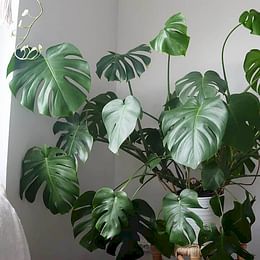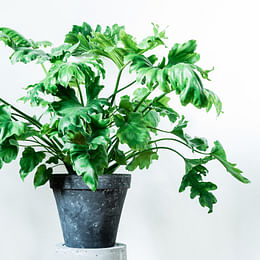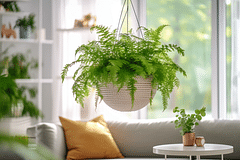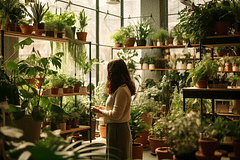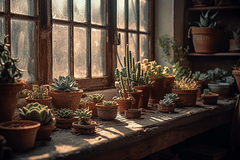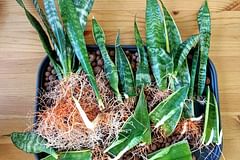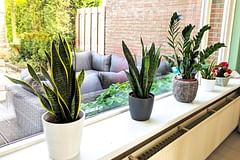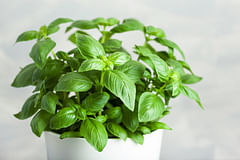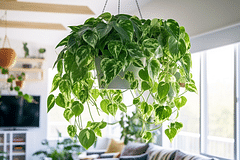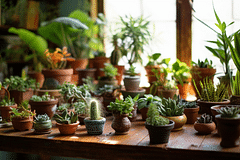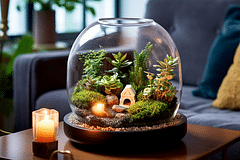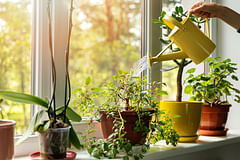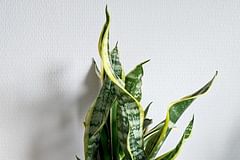Plants Similar to Monstera: A Comprehensive Guide
Discover the perfect leafy companions resembling the Monstera plant in this comprehensive plant care guide. Join me on this exciting journey of plant care and exploration. Let's unlock the secrets to growing and caring for Monstera-like plants together!
Last updated on:
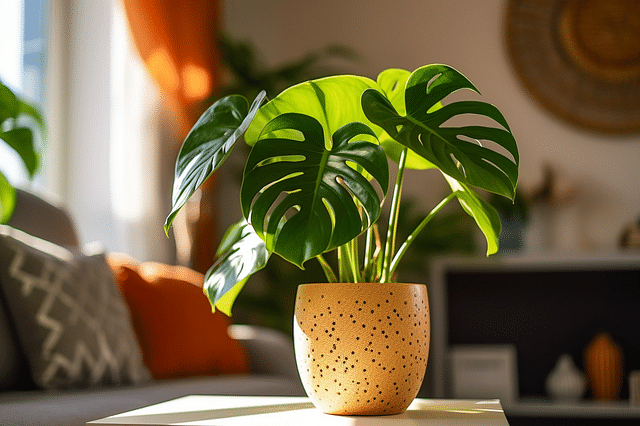 I'm sure I'm not alone in saying this, but I've always been fascinated by the Monstera genus. These unique plants are known for their large, perforated leaves and are a popular choice for indoor gardening. If you like Monstera plants, there are a few other plants you might also like. That's what we're going to look at in this plant care guide.
I'm sure I'm not alone in saying this, but I've always been fascinated by the Monstera genus. These unique plants are known for their large, perforated leaves and are a popular choice for indoor gardening. If you like Monstera plants, there are a few other plants you might also like. That's what we're going to look at in this plant care guide.
First, we'll look at some of the characteristics of the most popular Monstera variety: the Monstera Deliciosa. Afterward, I'll highlight a few other types of Monstera that you might not have heard of before, and finally, we'll have a look at some plants that are very similar to a Monstera when it comes to looks and care requirements.
Here's what we're going to look at:
Let's get started and discover new Monstera varieties and some plants that are very similar to a Monstera!
Monstera Deliciosa
As a long-time plant owner, I have come across many different types of foliage, but there is one that stands out among the rest: Monstera Deliciosa. This evergreen plant is native to the rainforests of Central and South America and is a popular choice for houseplants due to its unique characteristics.
Characteristics
Monstera Deliciosa is known for its heart-shaped leaves that can grow up to three feet long. The leaves have distinct fenestrations, which are the Swiss cheese-like holes that make this plant so recognizable. The plant is a climber and can grow up to 70 feet tall in its natural habitat. It has aerial roots that help it climb trees and other structures.
The plant produces a spathe, which is a type of flower that is surrounded by a leaf-like structure called a bract. The spathe is usually white and can grow up to 10 inches long. The plant's veins are also a unique feature, as they are raised and have a reddish color.
Why is it the most well-known Monstera?
Have you heard about Monstera Deliciosa? It's become a popular houseplant for good reason! Not only is it easy to care for if you give it bright indirect light and adjust the amount of watering, but it also has beautiful leaves. They've been trending in recent years. One of the most desirable ones is the Thai Constellation, with its unique variegation.
Caring for a Monstera Deliciosa is a great way to take your indoor gardening skills up a level! It's quite a forgiving plant, which makes it great for beginners as well as more advanced plant owners. If you're looking for more information about taking care of a Monstera Deliciosa, have a look at How to care for a Monstera.
Popular Monstera Varieties
You might have thought the Monstera Deliciosa is the only Monstera out there, but nothing is further from the truth. There are quite a few incredible Monstera varieties, but some are more well-known than others. So let's have a look at a few of the other popular Monstera varieties.
Monstera Adansonii
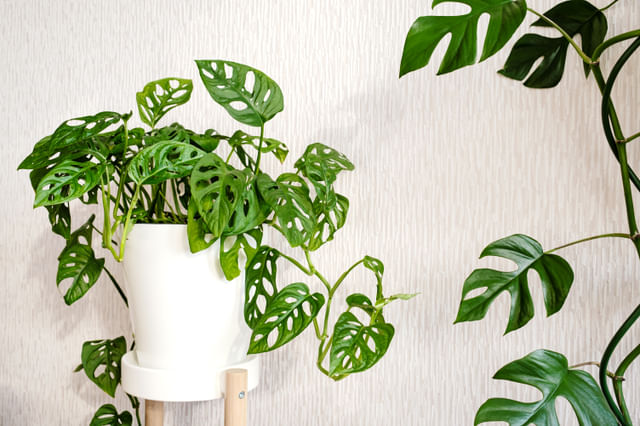
The Monstera Adansonii, or the Swiss Cheese Vine, is a unique type of Monstera that has caught the eye of many plant lovers. Like the Monstera Deliciosa, it has leaves full of holes. However, there are more holes in the Adansonii's leaves, and they are smaller. The Adansonii's leaves are also much smaller and have an oval shape. On the other hand, the Deliciosa has larger, heart-shaped leaves. The Adansonii's leaves are thin and delicate, while the Deliciosa's leaves are thick and sturdy.
The way the Monstera adansonii grows is also different from the Deliciosa. While the Deliciosa prefers to grow outwards along the ground, the Adansonii likes to climb upwards. If you give it something to climb on, it can reach a height of 10 feet. This makes it very flexible. You can let it climb up a support, or let it hang down from a pot.
Both the Adansonii and the Deliciosa are easy to take care of. They come from tropical areas and can handle different conditions inside a house. They do best in bright, but not direct, sunlight. This makes them perfect for both new and experienced plant owners.
Monstera Peru
The Monstera Peru, often referred to as the Karstenianum, is a treasured variety within the Monstera family, particularly sought after by plant collectors. Similar to the Monstera Deliciosa, it has the lush, green leaves that you'd recognize as a Monstera leaf. However, several features set it apart and make it a unique variety.
Unlike the Monstera Deliciosa, known for its vast, hole-riddled leaves, the Monstera Peru exhibits smaller, thick, and glossy green leaves. The leaves display an interesting, intricate pattern that resembles the reptilian skin or an aerial view of a mountain range, giving it a unique, exotic feel. They don't have the characteristic fenestrations or holes of the Deliciosa, but they add a different texture to your living spaces.
The Monstera Peru, which is native to Peru, shares the Monstera Deliciosa's love for warm, humid conditions. However, this variety can be very hard to find, which is why many plant owners will call it a rare plant. The Monstera Peru thrives under similar care conditions as the Monstera Deliciosa, favoring bright, indirect light and well-draining soil. Its unique characteristics and beauty make it a plant to look out for when going to plant shops.
Monstera Dubia
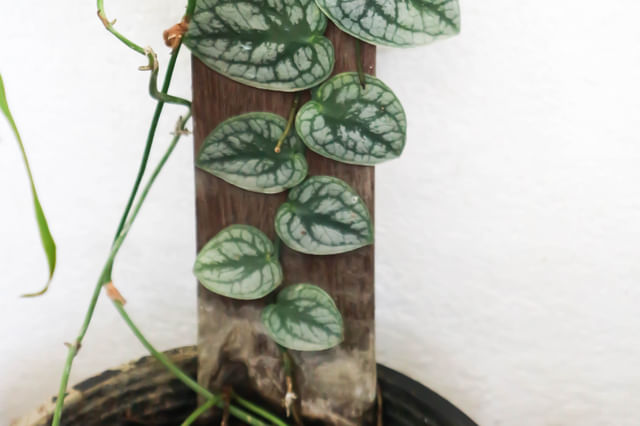
An interesting member of the Monstera family is the Monstera Dubia, also affectionately known as the Shingle Plant. The leaves of the Dubia aren't large and holey like the Deliciosa, but instead, they lay flat and overlap one another, like shingles on a roof. This plant looks a lot, and I mean a lot, like the Scindapsus pictus. The only difference is the holes in the leaves of the Monstera Dubia.
The leaves of the Monstera Dubia are smaller and more uniform in size than those of the Monstera Deliciosa. Unlike Deliciosa's large, heart-shaped, fenestrated leaves, Dubia's leaves are longer and heart-shaped with impressive patterns. These leaves are beautifully patterned with a mix of light and dark green hues, creating an exciting, striking visual interest in any space.
Monstera Dubia is a climber and can achieve heights of up to 6 feet. While Monstera Deliciosa often expands in breadth, the Monstera Dubia tends to grow vertically, sticking closely to its support. Both of these plants love warm, humid environments, and bright, indirect sunlight. The Monstera Dubia is generally easy to care for, making it a fantastic choice for beginners and more advanced plant parents.
Monstera Obliqua
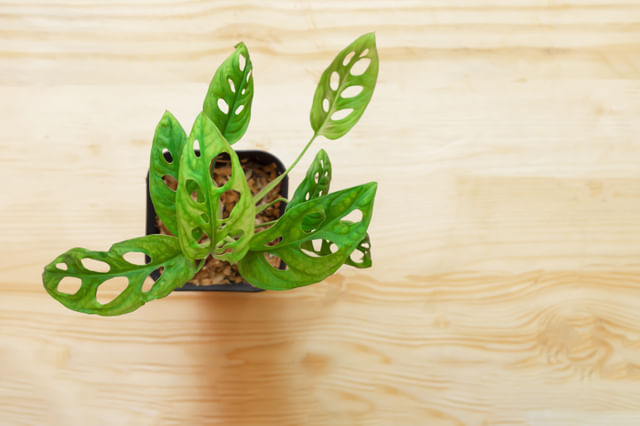
The Monstera Obliqua is probably the strangest-looking plant you'll ever see. Even if it's very similar in care to the Deliciosa, this plant has a unique appearance that sets it apart from its popular relative. The most striking difference lies in its leaves, which are not just holey like those of the Deliciosa, but almost fully made up of holes, giving them a delicate, lace-like appearance.
The leaves of the Monstera Obliqua are thin and more delicate compared to the Monstera Deliciosa's robust, leathery leaves. They have an extreme level of holes, that make the leaves appear more like a complex network of veins than a solid leaf. This feature makes the Obliqua one of the most distinguishable and desirable varieties in the Monstera family.
The Monstera Obliqua is native to the jungles in Central and South America and is very difficult to find, making it another one of those rare houseplants. It shares similar care needs with the Monstera Deliciosa, like their preference for bright, indirect light and well-draining soil, but its thin leaves may require more frequent misting to replicate its native humid environment.
Monstera Pinnatipartita
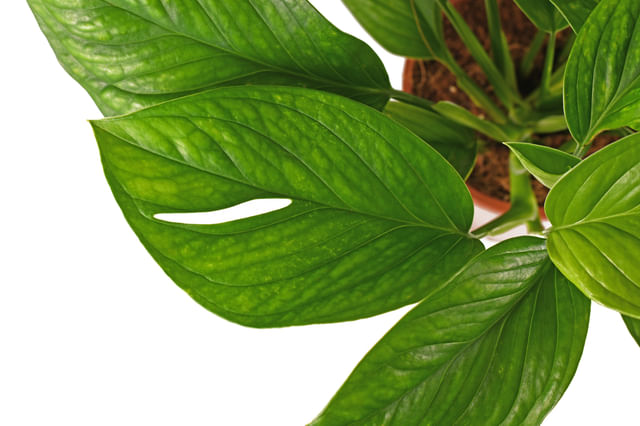
The Monstera Pinnatipartita is another fascinating member of the Monstera family, with yet another variation on the classic Monstera leaf. Unlike the Monstera Deliciosa's large, hole-filled leaves, the Monstera Pinnatipartita has deeply lobed leaves, meaning they have deep cuts or divisions. This feature makes the leaves appear split, giving them a unique look.
The Monstera Pinnatipartita, native to the forests of Ecuador, shares the Deliciosa's love for warm, humid environments. However, like many of the other Monsteras in this list, it can be quite difficult to find. If you're lucky enough to have one, you'll have a unique plant to decorate your house.
Taking care of the Monstera Pinnatipartita is much like the Monstera Deliciosa. It thrives in bright, indirect light and well-draining soil. Their care routines are quite similar, making it an exciting option for those already familiar with Deliciosa's needs.
Monstera Siltepecana
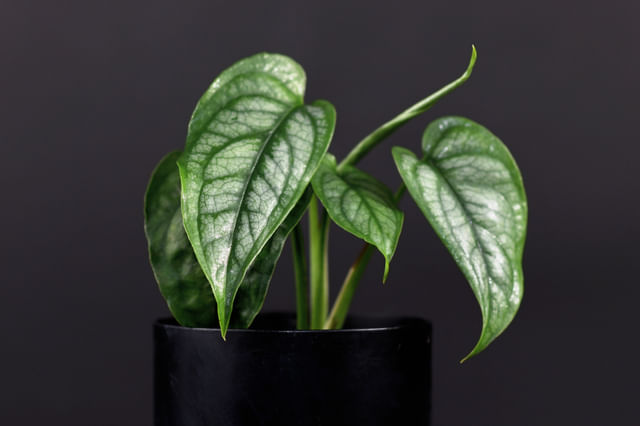
Monstera's all have some of the most unique leaves you can imagine and the Monstera Siltepecana is no exception. The Monstera Siltepecana, also known as the Silver Monstera, is very similar to take care of as the Monstera Deliciosa, but the different leaves make it a unique addition to your plant collection.
The highlight of the Monstera Siltepecana is its stunning silver markings on its leaves. The leaves of the Siltepecana have a beautiful silver sheen, which is a perfect contrast compared to the green leaves of most other Monsteras.
The Siltepecana is a climbing plant and can reach a height of up to 6 feet with the right support. However, it usually stays more compact, with the leaves being smaller and more narrow than the leaves of the Deliciosa. This makes it a great choice for indoor spaces with limited room.
The Monstera Siltepecana might look very complex, but it's quite easy to care for. It loves bright, indirect light, well-draining soil, and appreciates a humid environment, much like the famous Monstera Deliciosa. So if you're already familiar with Deliciosa's care, this plant is a great alternative.
Monstera Acuminata
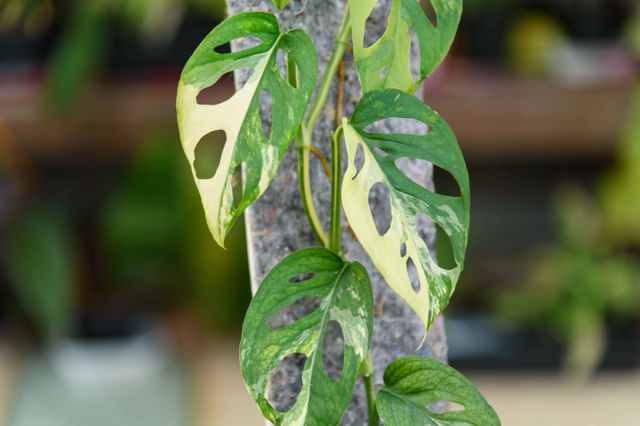
The Monstera Acuminata is from the tropical regions of Central and South America. Much like the Monstera Deliciosa, it has thick, glossy, green leaves of the Monstera family. However, there are subtle differences that set it apart from the well-known Deliciosa.
The leaves of the Monstera Acuminata look a lot like the leaves of a Monstera Adansonii. The leaves of the Acuminata are slightly smaller and pointier than the leaves of the Adansonii. The Monstera Acuminata stays quite small and is, like the Adansonii, a climbing Monstera. You can also plant it in a hanging planter and let it grow down, like a Pothos or Philodendron.
Finding the Monstera Acuminata, like some of the other Monsteras on this list, can be a bit of a challenge. It's quite a rare plant.
If you're already familiar with the care of a Monstera Deliciosa, you're in luck. The Monstera Acuminata is very similar in care to the well-known Monstera, making it a manageable and delightful addition for houseplant enthusiasts who are familiar with the Monstera's general care.
Monstera Epipremnoides
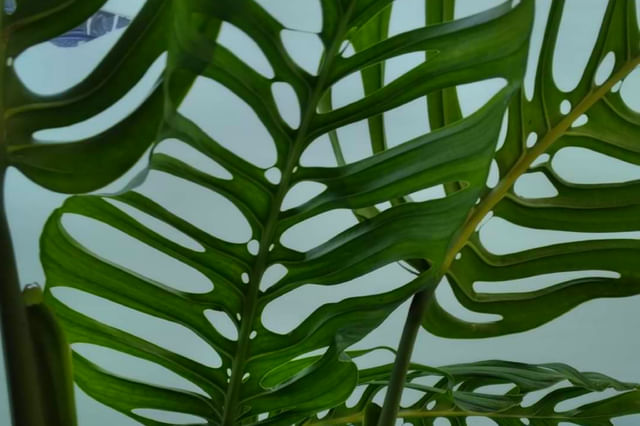
The Monstera Epipremnoides, native to the jungles of Central and South America, bring yet another twist to the Monstera family. This variety of Monsteras is a mix between the Adansonii and the Obliqua, as it has large holes that almost connect. The plant's leaves look more like a leaf skeleton than a real leaf, but not quite as bad as the Obliqua.
One of the highlights of this plant is the leaf structure. Its leaves are deeply lobed or cut, much like the leaves of a fern, giving it an almost otherworldly appearance. Unlike the Deliciosa's broad, heart-shaped, hole-filled leaves, the Epipremnoides' leaves are narrow and elongated, with unique incisions that can give them an almost feather-like appearance. This unusual leaf structure can make it seem like a completely different plant at first glance.
Like the Monstera Obliqua, this variety is also quite rare. For the lucky few of you who have one of these plants, the plant care requirements of this plant are very similar to that of a Monstera Deliciosa. It loves bright, indirect light and a warm, humid environment.
Monstera Borsigiana
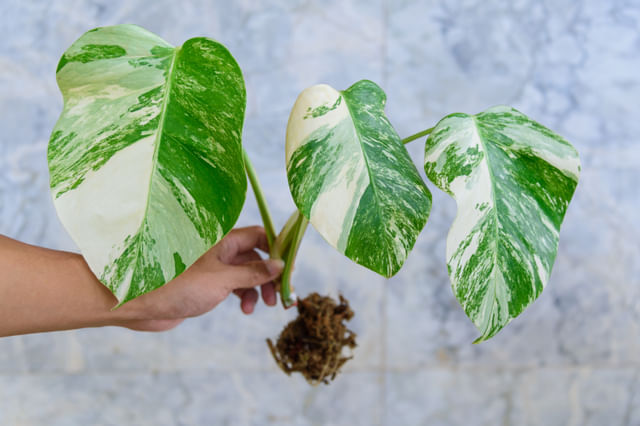
And the last variety I'd like to highlight in this plant care guide is the Monstera Borsigiana. It's native to the warm, tropical regions of Central and South America and shares many similarities with the well-known Monstera Deliciosa, such as its thick, glossy leaves and its love for a humid environment. However, some features make it a unique specimen in its own right.
The Monstera Borsigiana's leaves closely resemble that of the Monstera Deliciosa, with both varieties showcasing large, glossy leaves with splits and holes. However, compared to the Deliciosa, the Borsigiana's leaves tend to be slightly smaller and its splits are present, which makes the plant a little more subtle.
One of the main reasons this plant is popular is its rapid growth and easy care routine. This plant can reach up to 10 feet in height, similar to the Deliciosa, but often grows more quickly.
It thrives in bright, indirect light and well-draining soil. The Monstera Borsigiana is a fantastic choice for plant lovers who want a faster-growing Monstera.
Houseplants Similar to a Monstera
Now that we've looked at a few Monstera varieties that might be new to you, let's have a look at some plants that are very similar to a Monstera plant.
Thaumatophyllum bipinnatifidum
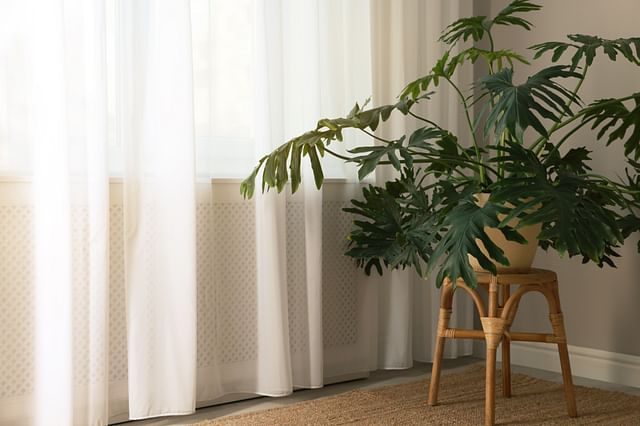
The first plant I'd like to highlight is the Thaumatophyllum bipinnatifidum, more commonly known as the Philodendron Selloum Hope or Lacy Tree Philodendron. Like a Monstera, it has large and glossy leaves with slits.
The biggest difference between the two plants is the fact that the Monstera has holes/fenestrations in its leaves, while the Thaumatophyllum bipinnatifidum only has split leaves. The leaves on the Thaumatophyllum bipinnatifidum are also more narrow and elongated.
When it comes to caring for this plant, it has very similar care needs as the Monstera. You can find more detailed information about taking care of this plant in How to Take Care of the Philodendron Selloum Hope.
Rhaphidophora Tetrasperma
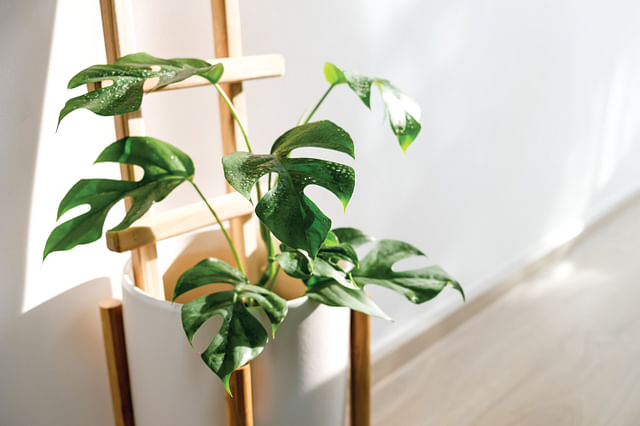
The next plant I'd like to highlight is the Rhaphidophora Tetrasperma, also known as Mini Monstera or Philodendron Minima. It looks a lot like a Monstera, but despite being called a Monstera and a Philodendron, it's neither of them. It's a separate plant in the same family: Araceae.
It has split leaves that are similar to Monstera's, but it's much smaller in size. This plant is a great option for those who love the look of Monstera but don't have enough space for a larger plant.
The Rhaphidophora Tetrasperma is an easy-care, low-maintenance plant that loves bright, indirect light and moist soil. More detailed information about taking care of this plant can be found in How to take care of a Philodendron Minima.
Pothos Satin / Scindapsus Pictus
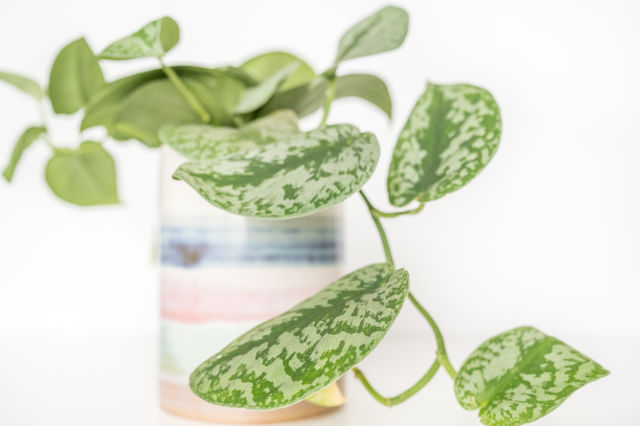
Pothos, also known as Devil's Ivy, is a popular indoor plant that is easy to care for. It's a part of the Araceae family, just like Monstera and Philodendron. Pothos has heart-shaped leaves that come in various shades of green, and some varieties have variegated leaves. While Pothos doesn't have split leaves like Monstera, some of its varieties, like the Pothos Satin, also known as the Scindapsus Pictus look almost identical to a Monstera Dubia.
The Pothos Satin is an ideal houseplant for beginners because of its easy-care nature. It loves bright, indirect light and you should keep the soil moist during the growing season. More detailed information about taking care of this plant can be found in How to care for a Golden Pothos.
In conclusion, there are a few plants that are similar to Monstera that you can consider for your plant collection. Philodendrons, Rhaphidophora Tetrasperma, and Pothos are all great options that provide a tropical vibe to your home.
Thank you for reading this post! I hope it helps you to keep your plants healthy and beautiful! If you're looking for more guides on specific plants, you can always request a plant guide to get a guide for the plant you have trouble with.
Tags: Plant selection
Posted on: Jul 8, 2023
